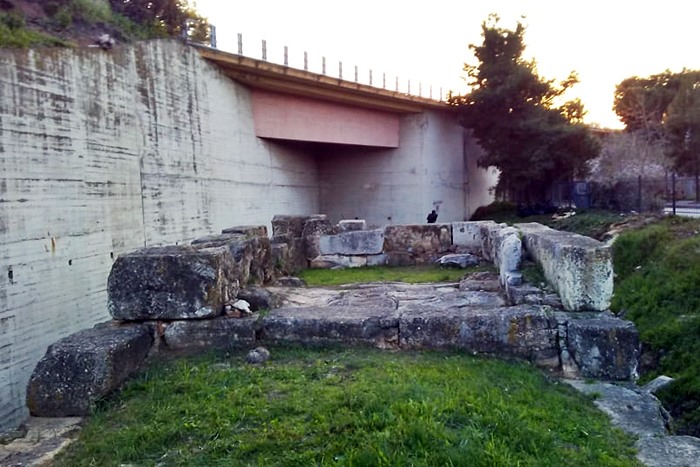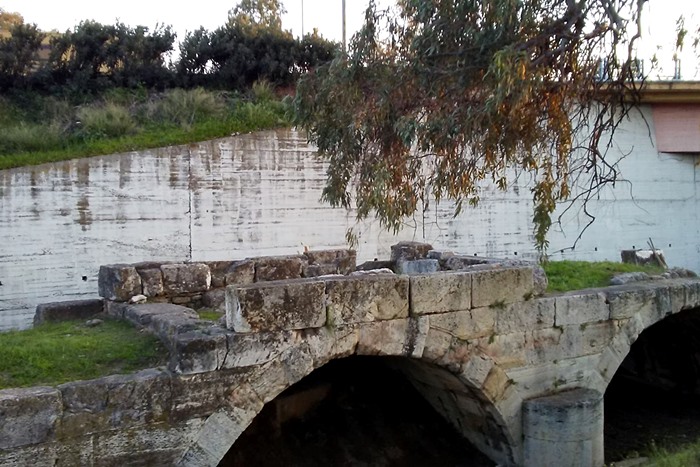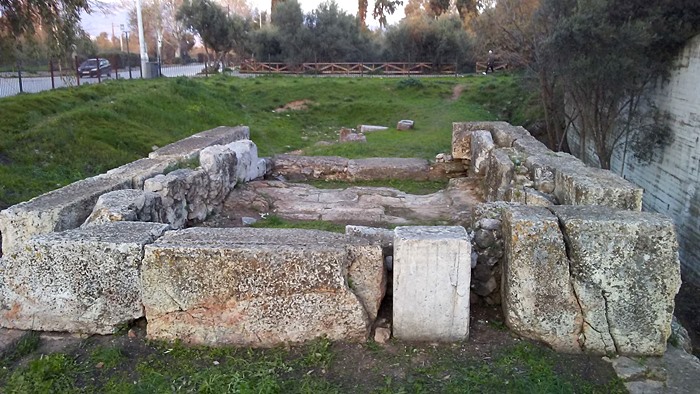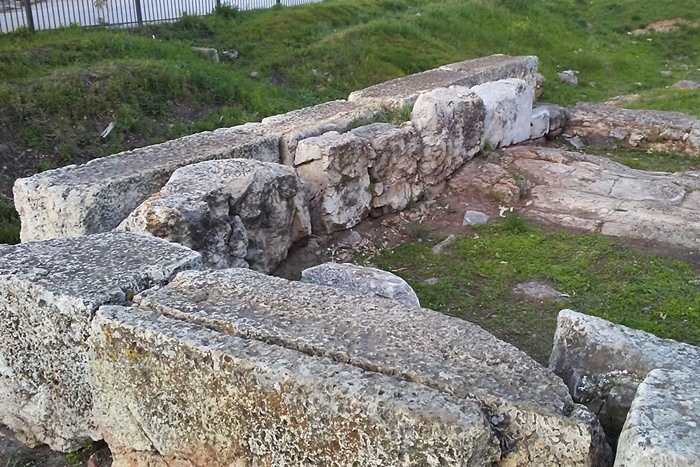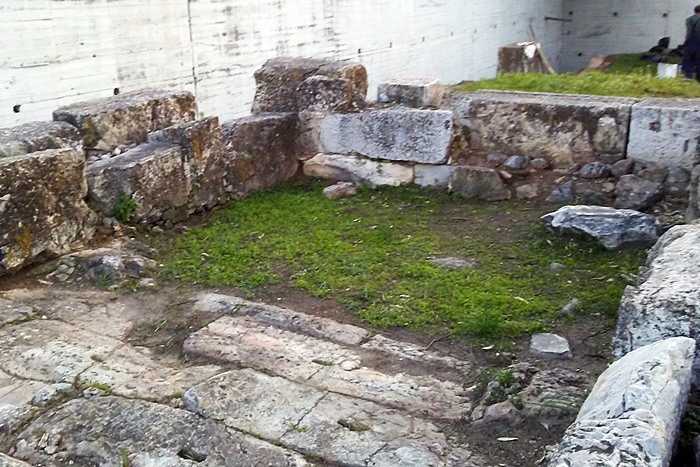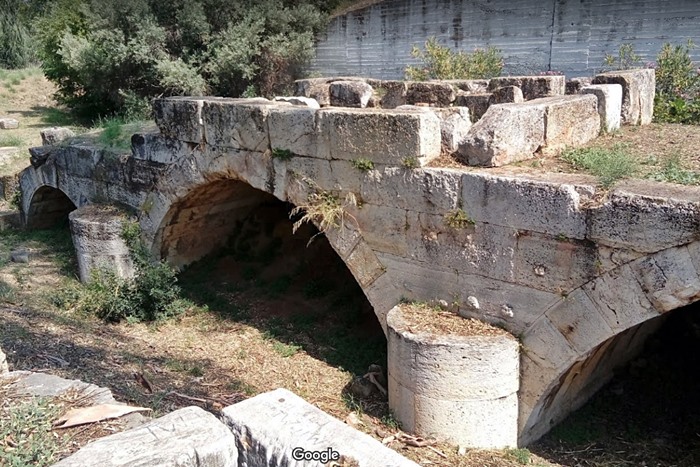Elefsina, Elefsina, Western Attica,Attica
Tower of Hadrianic Bridge
| Location: |
| On the Roman bridge NE of Elefsis, under the new highway |
| Region > Prefecture: | 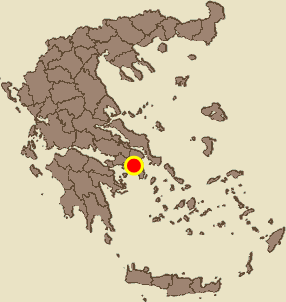 |
| Attica Western Attica | |
| Municipality > Town: | |
| City of Elefsina • Elefsina | |
| Altitude: | |
| Zero Altitude |
| Time of Construction | Origin | |
| Unknown | FRANKISH |
|
| Castle Type | Condition | |
| Ruined Tower |
In Ruins
|
Remains of a medieval tower on the top of a Roman bridge above the Kiphisos river of Eleusis.
This is the No.26 tower in the Langdon list of the Mortared Towers (=medieval towers) of Attica.
History
According to M.K. Langdon, the tower was Frankish but we cannot be sure about that. The presence of mortar in its wall indicates a medieval chronology indeed, but it could be a construction of the Byzantine period, before the 13th century.
The bridge is one of the preserved parts of the ancient Sacred Way (“Iera Odos”), i.e. the road connecting ancient Athens to Elefsis. It is located 1km east of the Sanctuary of Demeter. The construction of the bridge is attributed to the Roman emperor Hadrian who was initiated into the Eleusinian mysteries in 125 A.D.
Structure, Fortification & Buildings
Only the basis of the tower is preserved to a maximum height of 72cm. Obviously its building blocks have been used in various other periods as raw material for houses and other constructions.
The tower is rectangular measuring 5.34✖7.67 meters It was built of stones taken from the bridge and possibly from the ancient temple of Demeter.
| First entry in Kastrologos: | March 2019 |
Sources
- M. K. Langdon, (survey 1986), The Mortared Towers of Central Greece: An Attic Supplement, The Annual of the British School at Athens, Vol. 90, Centenary Volume (1995), pp. 484
- Pictures and Research by Mr. Ioannis Dedes, February 2019
- Website ΟΔΥΣΣΕΥΣ - Greek Ministry of Culture - article by Κ. Papangeli Eleusis, the Bridge over the Eleusinian Kifissos (Cephissus)
|
|
| Access |
|---|
| Entrance: |
| Free access |



